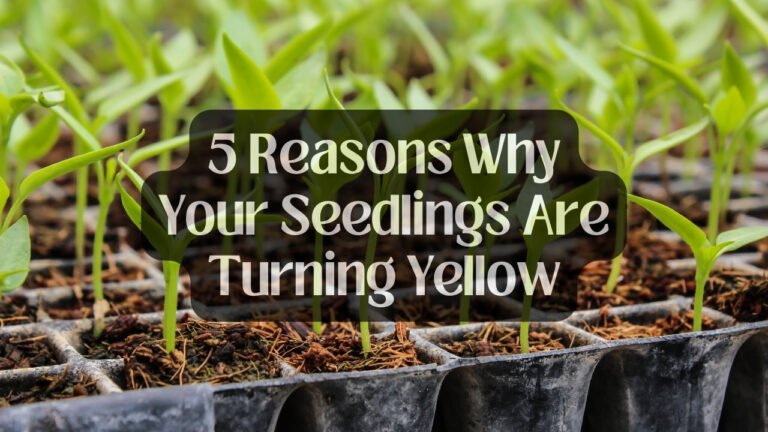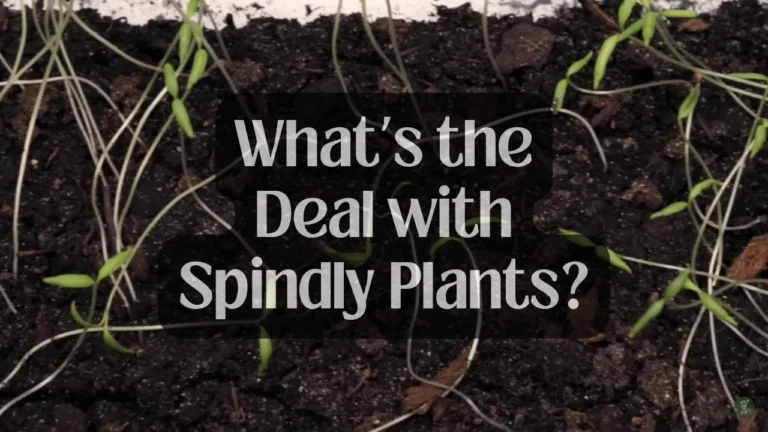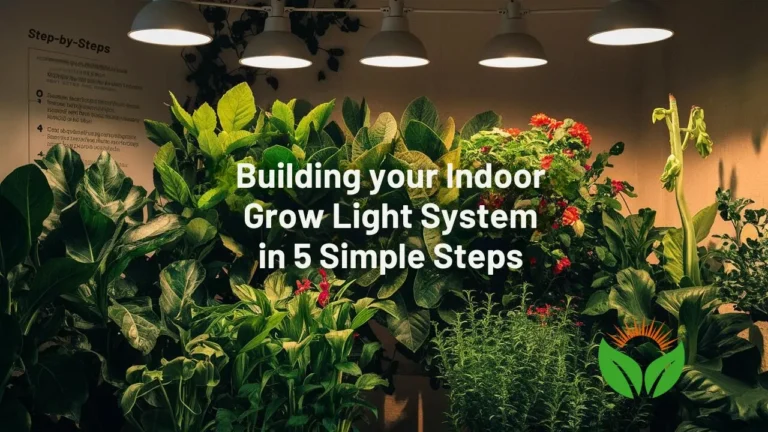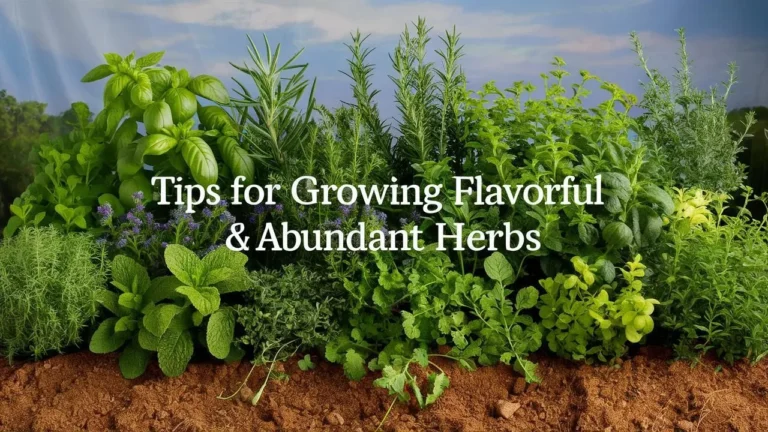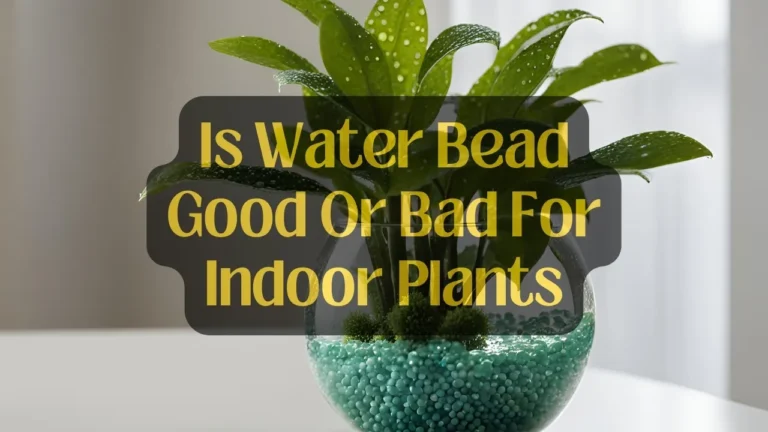Understanding Necrosis in Plants: Signs, Treatment, Prevention

Have you ever noticed brown or black spots marring the beauty of your favorite houseplant? These could be signs of necrosis, a fancy term for plant cell death.
Wondering what’s causing your plant’s distress? Necrosis can stem from a variety of things, from nutrient deficiencies to environmental stress. The good news is, with a little detective work, you can usually identify the culprit and take steps to save your precious greenery.
We’ll delve into the causes, how to differentiate it from similar plant problems, and most importantly, how to prevent it and potentially revive your plant. So, let’s start reading and don’t skip the article!
What Is Plant Necrosis?

Plant necrosis is basically a fancy way of saying plant cell death. It happens when plant tissues are injured or stressed, causing cells to die prematurely. This can show up in a few ways, like:
- Brown or black spots on leaves or stems.
- Wilting or drying of affected areas.
- Leaf edges are the first to show damage.
Necrosis can be caused by a number of things, including:
- Nutrient deficiencies like calcium, magnesium, copper, or potassium.
- Diseases from fungi, bacteria, or viruses.
- Environmental stress like drought, extreme temperatures, or exposure to harmful chemicals.
It’s important to note that necrosis is often just a symptom of a larger problem. By identifying the cause, you can take steps to save your plant. If you’re noticing signs of necrosis, a qualified nursery or gardening professional can help you diagnose the issue and recommend treatment.
3 Reasons for Plant Necrosis

Plant necrosis, which is basically cell death in plants, can stem from a few different issues. Let’s take a look.
- Nutrient Deficiencies: Plants need a specific balance of nutrients to thrive. If they’re lacking essential ones like calcium, magnesium, copper, or potassium, tissues can weaken and die, leading to necrosis.
- Diseases: Fungal, bacterial, or viral infections can damage plant cells, causing them to die and turn necrotic. This often appears as spots, blights, or cankers on leaves, stems, or fruits.
- Environmental Stress: Plants are tough, but they can only handle so much. Extreme temperatures, drought, or exposure to herbicides or other harsh chemicals can all stress a plant to the point of cell death and necrosis.
In essence, necrosis is a red flag that something’s wrong with your plant. By figuring out the cause – nutrient deficiency, disease, or environmental stress – you can take steps to save it. Consulting a nursery or gardening professional can help diagnose the problem and recommend the best course of action
Resolving the Dilemma Between Necrosis, Chlorosis, and Blight
While necrosis, chlorosis, and blight may seem similar at first glance, they are distinct plant conditions with different symptoms.
Here’s a quick trick to remember.
- Necrosis: Dead cells – Brown or black discoloration.
- Chlorosis: Lack of chlorophyll (green pigment) – Yellowing of leaves.
- Blight: Fast, disease-driven cell death – Rapid browning, blackening, or water-soaked spots.
Let’s talk in-depth about all these 3 plant problems.
Necrosis

Cell death is triggered by nutrient deficiencies, diseases, or environmental stress.
If you talk about symptoms, look for browning or blackening of affected areas. This could be patches, spots, wilting, or drying of leaves, stems, or flowers. Leaf edges are often the first to show damage.
Chlorosis

Primarily caused by a lack of essential nutrients, particularly iron, magnesium, or manganese.
And symptoms? This shows up as a yellowing of leaves, often between the veins while the veins themselves stay green. Unlike necrosis, there’s no browning or blackening.
Blight

Primarily fungal or bacterial infections, although some blight-like symptoms can be caused by environmental stress.
Alright, let’s talk about symptoms. Blight is a more rapid and aggressive form of cell death, often caused by fungal or bacterial diseases. It can appear as brown, black, or water-soaked spots on leaves, stems, or fruits. These spots may grow rapidly and cause the entire plant part to wilt or die.
Can Necrosis Be Treated? If Yes, How?
Technically it’s not reversible. However, the good news is there are ways to address the underlying cause and potentially save your plant. Here’s how.
- Identify the Cause: The key to treating necrosis is figuring out what’s causing it. Nutrient deficiencies, diseases, and environmental stress all have different solutions.
- Nutrient Deficiencies: If a lack of nutrients is the culprit, providing a balanced fertilizer with the missing element can help the plant recover and prevent further necrosis.
- Diseases: Fungal or bacterial diseases often require specific fungicides or bactericides to target the pathogen. Early intervention is crucial here to stop the spread and promote healing.
- Environmental Stress: For stress-induced necrosis, adjust the environment. This could mean watering more during a drought, providing shade in extreme heat, or choosing a different location with better light conditions.
Remember, prevention is always best. Providing proper care for your plant reduces the risk of nutrient deficiencies and diseases that can lead to necrosis. But if you do catch it early and address the cause, you can often save your plant from further damage.
How to Prevent Necrosis in Plants?

Preventing necrosis in plants is all about creating a healthy and balanced environment for them to thrive. Here are some key strategies:
Proper Watering
Overwatering and underwatering can both stress plants and lead to cell death. Learn the specific watering needs of your plant and adjust based on factors like pot size, climate, and season. Aim for consistent moisture without soggy soil.
Balanced Nutrition
Provide your plant with a good quality fertilizer that includes all the essential nutrients. Follow the recommended dosage and frequency for the specific plant type.
Sunlight Regulation
Most plants need adequate sunlight for photosynthesis, but some can scorch in intense heat. Research the light requirements of your plant and provide the right amount, possibly including shade during peak sun hours.
Temperature Control
Extremes of hot or cold can damage plant cells. Keep your plants within a comfortable temperature range suitable for their species.
Disease and Pest Control
Regularly inspect your plants for signs of disease or pests. Early detection and treatment can prevent them from spreading and causing cell death. Neem oil or insecticidal soap sprays can be effective for common pests. For diseases, a copper fungicide might be appropriate, but consult a professional for diagnosis and specific treatment recommendations.
Sanitation
Clean up fallen leaves and debris around your plants. This reduces the risk of fungal diseases that can lead to necrosis.
Potting Mix Selection
Use a well-draining potting mix that allows for good aeration. This prevents water from pooling around the roots, which can lead to rot and cell death.
By following these practices, you can create an environment that minimizes stress on your plants and helps prevent the development of necrosis. Remember, a healthy plant is a more resilient plant!
FAQs
Want to learn more Q&A? I hope these might help you.
Q: Is necrosis more common in certain types of plants?
Some plants are more susceptible to necrosis than others. For example, succulents and plants with thin leaves are more prone to necrosis due to their delicate nature and sensitivity to environmental changes.
Q: Is it possible to revive a plant with severe necrosis?
In cases of severe necrosis, it may be challenging to revive the plant completely. However, if the necrosis is caught early and the underlying cause is addressed, the plant may recover by producing new, healthy growth.
Conclusion
Plant necrosis sounds scary, but it’s simply a warning sign your plant needs some love. By identifying the cause – nutrient issue, disease, or stress – you can take action and nurse your plant back to health.
Remember, healthy habits like proper watering and balanced fertilizer go a long way in preventing necrosis. With a little care, your green friend can bounce back and keep thriving!

